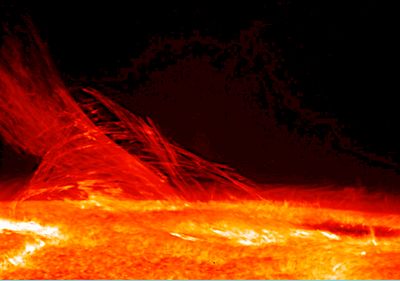Sounding Rocket Mission to Observe Magnetic Fields on the Sun
2012-07-03
On July 5, NASA will launch a mission called the Solar Ultraviolet Magnetograph Investigation or SUMI, to study the intricate, constantly changing magnetic fields on the sun in a hard-to-observe area of the sun's low atmosphere called the chromosphere.
Magnetic fields, and the intense magnetic energy they help marshal, lie at the heart of how the sun can create huge explosions of light such as solar flares and eruptions of particles such as coronal mass ejections (CMEs). While there are already instruments – both on the ground and flying in space – that can measure these fields, each is constrained to observe the fields on a particular layer of the sun's surface or atmosphere. Moreover, none of them can see the layer SUMI will observe.
"What's novel with this instrument is that it observes ultraviolet light, when all the others look at infrared or visible light," says Jonathan Cirtain, a solar scientist at NASA's Marshall Space Flight Center in Huntsville, Ala. and the principal investigator for SUMI. "Those wavelengths of light correspond to the lowest levels in the sun's atmosphere, but SUMI will look at locations higher in the chromosphere."
See the website for more details: http://www.nasa.gov/mission_pages/sunearth/news/sumi-science.html (SY)

 Search
Search

